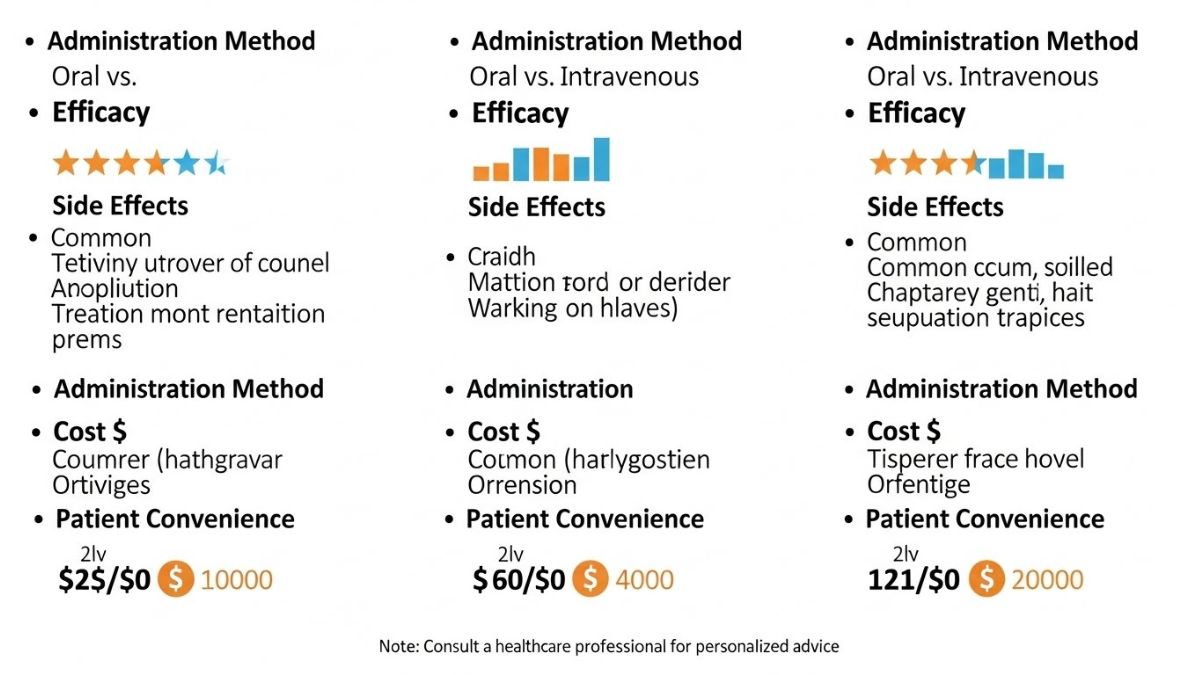HEALTH
6 Ways E-Bikes Help You Remain Fit and Healthy

E-bikes, or electric bicycles, are all the rage in today’s time, becoming a favored mode of transportation for many seeking a mix of convenience and fitness. These bikes come equipped with an electric motor that assists in pedaling, making cycling accessible to a broader range of people. More than just a way to get around, e-bikes offer significant health benefits, including improved fitness and reduced stress levels. This article explores six key ways that riding an e-bike can help you stay fit and healthy.
1. Improving Cardiovascular Health
Regular use of an e-bike can have a profound impact on your cardiovascular health. When you ride an e-bike, your heart rate is consistently elevated, which is a key factor in promoting heart health. This continuous cardiovascular exercise helps to strengthen the heart muscles, reduce blood pressure, and improve circulation throughout the body. It’s a safe and effective way to engage in aerobic exercise, which is crucial for maintaining a healthy heart.
Unlike traditional bikes, e-bikes provide adjustable levels of assistance, which allows you to tailor the intensity of your workout. You can choose to rely more on the motor when you start and gradually decrease the assistance as your fitness improves, thus providing a scalable and sustainable cardiovascular workout. This flexibility makes e-biking a practical fitness choice for people at various levels of physical ability and fitness goals.
2. Enhanced Caloric Burn
One of the distinctive features of some e-bikes is their fat tires. The Fat Bike typically has tires that are wider than 3.8 inches, with most ranging between 4.0 and 5.0 inches. But why are these tires so big? Primarily, it’s because they are designed to handle challenging terrains such as sand and snow where stability is crucial. The extra-wide tire helps the bike to float on these surfaces rather than sink, providing a smooth ride in conditions where regular bikes would struggle.
Riding an e-bike equipped with fat tires isn’t only about overcoming tough terrains; it’s also an excellent way to burn more calories. Navigating through unstable surfaces requires more energy and muscle engagement compared to riding on smooth roads. This means that cyclists will use more force to propel and maintain balance on their e-bikes, leading to higher caloric expenditure even during shorter rides. This feature makes fat tire e-bikes an ideal choice for those looking to enhance their fitness levels through more vigorous outdoor activity.
3. Building and Toning Muscles
E-biking is not only beneficial for cardiovascular fitness but also for muscle development and toning. The activity engages several major muscle groups, including the calves, thighs, glutes, and even the core and arms. As you pedal, especially in modes with less motor assistance, your muscles work against the resistance of the bike’s drive system. This resistance acts similarly to weight training, which is known for its ability to build muscle strength and tone.
Additionally, the muscle engagement required in e-biking is dynamic and varies with the terrain. When climbing hills or accelerating, your body calls on different muscles to exert more power. This variety in muscle use ensures a comprehensive workout that not only builds muscle strength but also enhances muscle endurance. Regular e-bike usage can result in toned muscles and an overall stronger physique, contributing further to a healthy and fit lifestyle.
4. Enhancing Joint Mobility and Reducing Impact
E-biking stands out as a low-impact exercise, making it especially beneficial for those with joint sensitivities or previous injuries. Traditional cycling can sometimes put stress on joints, particularly the knees and ankles, due to the repetitive motion and pressure. However, the electric assist feature of e-bikes helps to alleviate this strain. By providing assistance during pedaling, e-bikes reduce the amount of force that riders need to apply. It means less stress on the joints, allowing for a pain-free riding experience that can improve joint mobility over time.
Moreover, the ability to adjust the level of assistance means that individuals can customize their riding experience to match their physical capabilities and limitations. This adaptability not only helps in preventing overexertion but also encourages longer periods of activity, which is crucial for joint health. Regular movement helps to maintain joint flexibility and strength, and e-biking provides a fun and practical way to achieve this without the risks associated with higher-impact exercises.
5. Boosting Mental Health
Outdoor activities like riding an e-bike can have a positive impact on mental well-being, reducing feelings of stress, anxiety, and depression. The natural surroundings, fresh air, and sunlight all contribute to this effect, often referred to as “green exercise.” Additionally, the moderate exercise provided by e-biking stimulates the release of endorphins, sometimes known as the ‘feel-good’ hormones, which naturally improve mood and reduce feelings of pain.
Furthermore, the satisfaction of riding and the sense of accomplishment when reaching destinations or meeting fitness goals can boost your self-esteem and confidence. The social aspect of e-biking, whether joining a cycling group or simply sharing routes and experiences with friends, also plays a critical role in enhancing social interactions and fostering a sense of community. All these factors combine to make e-biking a highly beneficial activity for mental health.
6. Promoting Consistency and Longer Duration in Exercise Routine
One of the key challenges with maintaining a regular exercise routine is finding the motivation to start and the stamina to continue. E-bikes address both these issues effectively. The motor assistance helps eliminate the dread of physical exhaustion and the daunting nature of challenging terrains, making it easier to get started with exercise. This initial ease can significantly boost the likelihood of sticking to a workout regimen, as the reduced effort makes the activity more enjoyable and less taxing.
Once the routine is established, e-bikes encourage longer sessions because they allow riders to cover more distance with less fatigue. It can be particularly motivating for individuals who might feel limited by their physical condition or discouraged by slow progress. Moreover, the adjustable assistance means that as your fitness improves, you can gradually increase your effort, ensuring that the exercise remains challenging and effective. This adaptability helps maintain a consistent exercise routine, which is essential for long-term fitness and health.
Conclusion
E-bikes offer a unique mix of accessibility, enjoyment, and health benefits that traditional bicycles and other forms of exercise might not provide. By helping riders burn more calories, improve cardiovascular health, build muscle strength, reduce joint impact, boost mental health, and encourage regular exercise, e-bikes represent a comprehensive fitness solution. Whether you’re looking to enhance your physical condition, recover from an injury, or simply enjoy the great outdoors, incorporating an e-bike into your daily routine can lead to significant improvements in both physical and mental well-being. This modern approach to cycling can truly transform your health and enhance your quality of life.
HEALTH
How valgensin Compares to Other Treatments: A Comparative Analysis

Valgensin is making waves in the world of medical treatments, captivating both patients and healthcare professionals alike. As new therapies emerge, many are left wondering: how does valgensin stack up against traditional medications? With a unique approach to treatment, it’s essential to explore what sets valgensin apart. This comparative analysis dives deep into its benefits, potential side effects, effectiveness rates, and real patient experiences. Whether you’re considering a switch or simply curious about this innovative option, let’s unravel the differences together.
Comparison to traditional medications
When examining valgensin, it’s essential to compare it to traditional medications. Many patients have long relied on standard treatments for their health issues. These often come with a host of side effects and varying degrees of effectiveness.
Traditional medications can take time before any noticeable results appear. For some, this leads to frustration and discontinuation of treatment altogether. In contrast, valgensin aims for quicker relief without the prolonged waiting period associated with many conventional drugs.
Additionally, traditional options may require frequent dosing throughout the day. Valgensin offers more flexible administration schedules that fit better into modern lifestyles.
Cost is another factor where valgensin has an edge. While some older medications can be expensive due to ongoing prescriptions or additional therapies needed, valgensin presents a potentially more cost-effective solution over time.
Advantages of valgensin over other treatments
Valgensin stands out in the realm of treatment options due to its unique mechanism. Unlike traditional therapies, it targets specific pathways in the body, offering a more tailored approach. This precision can lead to enhanced outcomes for patients.
One notable advantage is the reduced frequency of administration. Many patients appreciate less frequent dosing schedules compared to daily medications. This convenience often translates into improved adherence and better overall management.
Additionally, valgensin boasts a favorable side effect profile. Many users report fewer adverse reactions than those experienced with conventional treatments, making it an attractive option for sensitive individuals.
Another appealing aspect is its compatibility with other therapies. Patients can integrate valgensin into their existing regimens without significant interactions, allowing for a comprehensive treatment strategy that maximizes benefits while minimizing risks.
Side effects and safety concerns
When considering valgensin, it’s essential to understand its safety profile. Like any medication, it can come with side effects. Common reactions include mild headaches and gastrointestinal disturbances. These are generally short-lived.
Serious adverse events are rare but possible. Patients should remain vigilant for symptoms like unusual fatigue or allergic reactions. Discussing any pre-existing conditions with a healthcare provider is crucial before starting treatment.
Monitoring during the initial phase of using valgensin is important. Regular check-ins can help manage any emerging issues effectively.
Reports suggest that most users tolerate this treatment well, experiencing minimal disruptions in daily life compared to other options available on the market.
It’s always wise to weigh potential risks against benefits when exploring treatments like valgensin, ensuring informed decisions tailored to individual health needs.
Effectiveness and success rates
Valgensin has gained attention for its effectiveness in treating various conditions. Clinical studies indicate promising success rates, often outperforming traditional therapies.
Patients frequently report noticeable improvements in their symptoms within weeks of starting Valgensin. This swift onset can be a game-changer for those seeking relief from chronic issues.
Moreover, the medication appears to maintain its efficacy over time, unlike some alternatives that may lose potency with prolonged use.
Many healthcare providers are increasingly recommending Valgensin, citing strong clinical evidence supporting its benefits.
Patient feedback adds another layer of insight into its performance. Numerous testimonials highlight significant quality-of-life enhancements attributed to the treatment.
These factors contribute to Valgensin’s growing reputation as a reliable option among available treatments today.
Patient experiences and testimonials
Patient experiences with valgensin have been diverse and insightful. Many users report a significant improvement in their condition, noting how this treatment has changed their daily lives.
One patient shared that after starting valgensin, they felt more energetic and engaged in activities they once avoided. The emotional uplift was just as important as the physical benefits for them.
Another individual highlighted the ease of integrating valgensin into their routine. They appreciated not having to deal with complicated dosing schedules or frequent doctor visits.
Testimonials often emphasize the supportive community surrounding valgensin. Patients find comfort in sharing their stories and connecting with others on similar journeys.
The feedback also reflects a sense of empowerment among users, who feel more in control of managing their health challenges through this innovative treatment option.
Conclusion:
The landscape of medical treatments is constantly evolving, and valgensin stands out as a noteworthy option. Its unique mechanism sets it apart from traditional medications, offering patients an innovative choice for managing their conditions.
When comparing valgensin to conventional therapies, its advantages become apparent. Many users report fewer side effects and improved tolerability, making it a more appealing option for those who have struggled with other treatments. Safety remains a top priority, and ongoing studies continue to explore the long-term implications of using this novel therapy.
Effectiveness is crucial in any treatment plan. Valgensin shows promising results that rival established medications while often delivering quicker relief for patients seeking answers to their health challenges. The testimonials shared by individuals who’ve experienced its benefits add a compelling layer to its reputation.
HEALTH
Why SSRIs Don’t Work the Same for Everyone: Genesight Helps Find Out

Today, SSRIs are among the most commonly prescribed medications for mental health conditions such as depression, anxiety, PTSD, and even OCD. As well as some other conditions that these medications are known to be able to help with. They are a newer class of antidepressants that has shown to have quite some positive effects, and mild side-effects, so it is no wonder that psychiatrists are relying on them when trying to determine the right course of treatment for their patients.
Now, you may have already heard some amazing stories about how SSRIs helped some people overcome their anxiety and depression symptoms. They help regulate emotional response and mood, as well as our sleep, our appetites, and much, much more. So, clearly, their effects can undoubtedly be amazing, and it is not a surprise that a lot of people are reporting great things after taking them.
Yet, apart from that, you may have also heard some people claiming that they didn’t get the effects they have been expecting from SSRIs. That they didn’t get much help, and that they have possibly experienced nothing but some side-effects. So, now you’re wondering how it is possible that these medications don’t work the same for everyone, and why it is that we can all have such different experiences with them.
Well, that is an important question right there. What we are going to do now, thus, is answer it for you, hoping to clearly explain why those differences are normal, while also letting you know how you may be able to check in advance what kinds of effects you could expect if your doctor prescribed these medications to you. If you’ve come across Genesight or similar professionals already, then you know that leaving things up to chance is not always necessary, as there are methods for checking this in advance. More on that later, though.
In short, we’re talking about genetic risk factors, and you can read more about that here: https://www.nature.com/articles/s43856-021-00046-8
Why SSRIs Don’t Work the Same for Everyone
Okay, let us now answer the first important question for you right here. To put things simply, you want to know why it is that you are hearing different stories regarding SSRIs from different people. Simply saying that this is normal and moving on with it probably doesn’t cut it. In other words, you want to know why these mediations don’t work the same for everyone, and we are now going to discuss precisely that.
One of the biggest reasons to be aware of here is the fact that our bodies process medications at different speeds, and that is due to some genetic differences in our metabolism. So, you may metabolize the drug more slowly or more quickly than someone else, which leads to having different experiences with SSRIs. Even when you are taking the same drug as someone else and the same dose.

Now, as you probably already know, SSRIs work by blocking the serotonin transporter, which is basically a protein that reabsorbs serotonin in the brain. And, well, there are some genetic transporter variations that can affect how strongly the SSRIs will be able to bind, how quickly the symptoms will respond to the drug, how well serotonin signaling will improve in general, as well as what kinds of side-effects you could wind up experiencing. This is another reason why these medications can work perfectly for some people, while not working that well for others.
Of course, the differences in serotonin receptors can have similar effects here. Basically, genetic differences in those receptors can affect the actual effectiveness of SSRIs, as well as how quickly they will lead to improvements, and, once again, whether some side effects will emerge. In short, the unique receptor profile of your brain is sure to affect your response to these medications.
We also cannot fail to mention that some co-occurring conditions can also play a part here. For instance, if you’re fighting depression, you may also be struggling with anxiety, PTSD, chronic pain or other things, and all of those things will impact how your brain responds to SSRIs. And, in the end, your lifestyle and the environmental factors can affect the response as well.
How Genetics Can Be Helpful in Finding Out What to Expect
Now, you often can’t change the environmental factors. What you can do when you get prescribed an FDA Approved SSRI for Depression, for example, is take some genetic tests to try and determine how you would respond. This is often done before being prescribed a specific drug, as it helps professionals understand your unique profile and thus find the best medication for you.
That is, as you may have guessed it, where Genesight and similar providers come in. Allowing you to do the genetic testing and thus get valuable clues about how your body will respond to certain SSRIs. These tests are rather valuable for clinicians, as well as for patients, because they can help find the best medication quickly.
HEALTH
The Rise of herbciepscam: How to Spot Scams in the Herbal Industry

The herbal industry has exploded in popularity over the past few years, with people turning to natural remedies for everything from stress relief to immune support. Amid this growing interest, however, lies a darker side: herbciepscam. As consumers seek out the benefits of herbal products, they also become targets for fraudulent operations that prey on their desires for wellness and healing.
With the promise of miraculous cures and transformative health benefits, it’s easy to get swept up by flashy marketing tactics. But not all products are created equal; some may even be harmful or ineffective. Understanding how to navigate this complex landscape is crucial for anyone looking to enhance their well-being through herbs.
This blog will delve into the common scams plaguing the herbal industry and arm you with knowledge on how to spot red flags before spending your hard-earned money. By becoming informed buyers, we can collectively push back against deceptive practices and ensure that our journey toward better health is safe and rewarding.
Common Scams in the Herbal Industry
The herbal industry has seen an explosion in popularity, but this growth has also paved the way for various scams. One of the most common traps involves exaggerated health claims. Some products promise miraculous cures without scientific backing.
Another red flag is false endorsements. Many companies rely on fake testimonials or celebrity influencers who have never used their products. This tactic can mislead consumers into thinking they’re buying something reputable.
Counterfeit herbs are a persistent issue as well. Unscrupulous sellers often substitute lower-quality ingredients while charging top-dollar prices.
Subscription models that lock customers into continuous payments without clear terms are becoming increasingly prevalent too. It’s always wise to read the fine print before committing to any recurring charges.
Misleading packaging and branding can create confusion about what you’re actually purchasing, making it crucial to stay informed and vigilant when choosing herbal products.
How to Spot a Scam Product or Company
When navigating the herbal industry, vigilance is crucial. One of the first red flags is overly bold claims. If a product promises miraculous results without any scientific backing, proceed with caution.
Check for transparency in ingredients and sourcing. Reputable companies provide clear details about what’s inside their products and where those ingredients come from.
Look at customer reviews but be discerning. Fake testimonials are common in the herbal market, often found on websites that lack credibility. Seek out unbiased platforms for feedback.
Verify certifications as well. Legitimate companies often display third-party testing results or certifications from recognized health organizations.
Trust your instincts. If something feels off—whether it’s an unprofessional website or pressure tactics to buy—it’s wise to step back and reconsider before making a purchase decision.
Tips for Avoiding Herbicepscam
Be vigilant when purchasing herbal products. Always check for third-party testing. Reputable companies usually provide lab results to verify the quality of their offerings.
Research the brand thoroughly before buying anything. Look for customer reviews and testimonials that highlight genuine experiences. A quick online search can reveal a lot about a company’s reputation.
Avoid deals that seem too good to be true. If an offer promises miraculous results or significant savings, it may be worth steering clear.
Pay attention to labels and ingredients lists. Authentic herbal products should have transparent labeling without vague terms or misleading claims.
Trust your instincts. If something feels off or raises red flags, don’t hesitate to walk away from the deal. Your health is paramount; make informed choices every time you shop in the herbal industry.
The Importance of Research and Education
Research and education are vital in today’s herbal industry. With so many products available, knowing what to look for can set you apart from potential scams.
Understanding the ingredients is key. The more you know about herbs and their benefits, the better decisions you’ll make. Knowledge empowers consumers to recognize authentic products versus those with exaggerated claims.
Moreover, staying informed helps you identify reputable companies. Look for transparent practices, quality certifications, and customer reviews that speak volumes about a brand’s reliability.
Engaging with online communities or reading credible sources also expands your understanding of herbal remedies. This ongoing education fosters critical thinking skills that are essential when evaluating new trends or marketing tactics.
Being knowledgeable not only protects your health but enhances your overall experience within the herbal world.
Conclusion:
The rise of herbciepscam highlights the importance of vigilance in the herbal industry. As consumers become more aware, it’s crucial to remain informed and cautious when choosing products. Always prioritize quality and safety over flashy marketing claims.
Research is your best ally. It empowers you to make sound decisions based on verified information rather than misleading advertisements. Education can help differentiate between genuine products and scams that prey on trust.
-

 GENERAL2 years ago
GENERAL2 years agoDiscovering the Artistic Brilliance of Derpixon: A Deep Dive into their Animation and Illustration
-

 Posts2 years ago
Posts2 years agoSiegel, Cooper & Co.
-

 Lifestyle2 years ago
Lifestyle2 years agoPurenudism.com: Unveiling the Beauty of Naturist Lifestyle
-

 HEALTH2 years ago
HEALTH2 years agoTransformative Health Solutions: Unveiling the Breakthroughs of 10x Health
-

 FASHION2 years ago
FASHION2 years agoThe Many Faces of “λιβαισ”: A Comprehensive Guide to its Symbolism in Different Cultures
-

 Lifestyle2 years ago
Lifestyle2 years agoBaddieHub: Unleashing Confidence and Style in the Ultimate Gathering Spot for the Baddie Lifestyle
-

 Entertainment2 years ago
Entertainment2 years agoGeekzilla Podcast: Navigating the World of Pop Culture, Gaming, and Tech
-

 Lifestyle1 year ago
Lifestyle1 year agoSandra orlow: Unraveling the Story of an Iconic Figure
